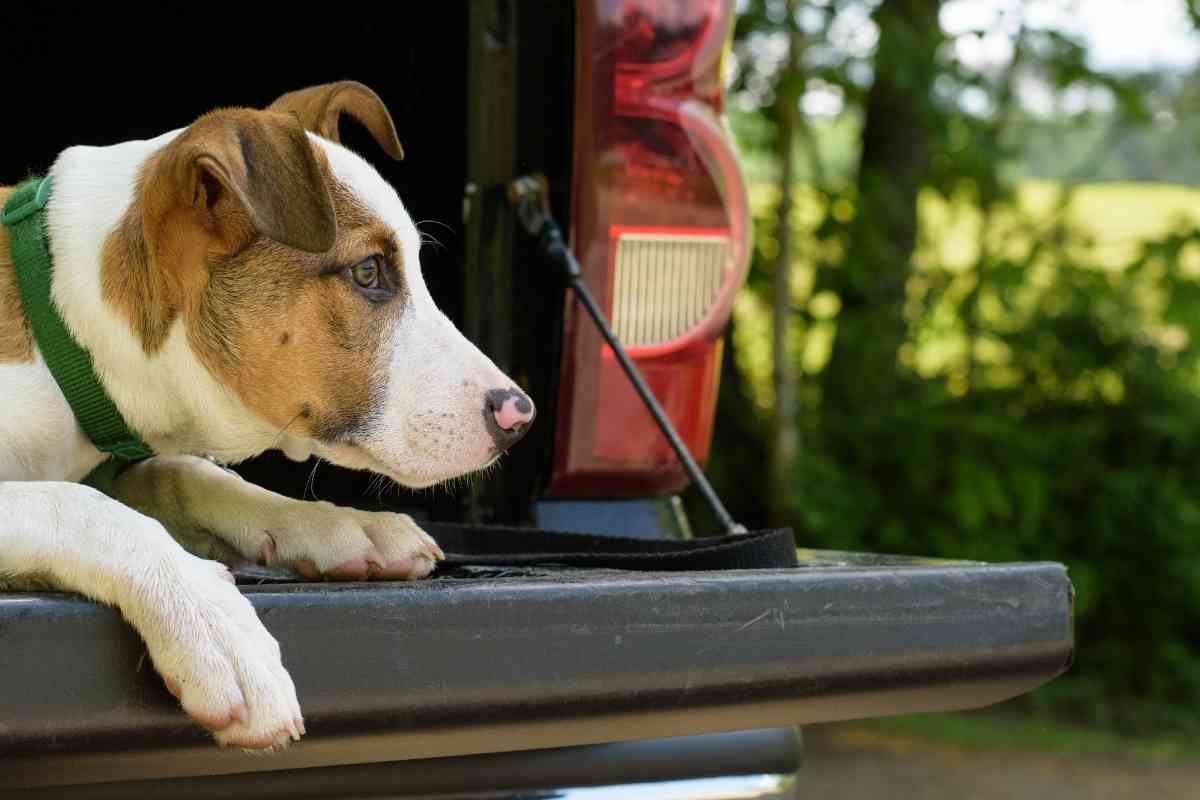Can You Drive A Pickup Truck With The Tailgate Down?
If you are wondering if pickup truck owners can drive a pickup truck with the tailgate down, you are not alone. You may even be surprised by the answer. Maybe you are wondering what the tailgate laws are for hauling an oversized load of lumber?
Or maybe you are curious how a lowered tailgate can affect the fuel economy of your vehicle?

Is it legal to drive a truck with the tailgate down?
The main thing to understand is that each state determines whether or not you are allowed to drive with your tailgate down. Most often there are exceptions for oversized loads, however, it is important that the load is properly secured and marked to ensure visibility.
So, where can you find out all the state laws for where you live pertaining to when you are allowed to drive with the tailgate down, how to properly mark oversized loads, and what kind of restrictions there may or may not be regarding oversized loads? Also, when it comes to fuel economy, how does driving with the tailgate up or down make an impact? Lastly, if you are in the market for a new pickup, what are some of the best pickup trucks for hauling oversized loads?
Let us take a closer look at some of the most common tailgate and oversized load laws in the country, where to find these types of laws, as well as explore how tailgates impact fuel economy. Additionally, let us take a look at some of the best trucks on the market for hauling oversized loads.
Where Can I find tailgate laws for where I live?
Every state should have an online driver’s manual available for review or download through its Department of Motor Vehicles or Department of Public Safety. For example, in the state of Minnesota, you can download a Minnesota Driver’s Manual to determine what kind of tailgate laws apply in the state as well as restrictions when it comes to oversized loads.
In Minnesota, you are not allowed to drive with the tailgate down, however, an oversized load on a non-commercial vehicle is what the state considers a projecting load. A projecting load must not stick out more than three feet out in front of the vehicle.
If the load sticks out more than four feet from the rear of the vehicle with the tailgate down, then a brightly colored flag that is no smaller than 16 square inches must be attached to the end of the load. The flag should be red, yellow, or orange. For night driving, a red lantern must be attached to the end.
Again, each state is going to have its own laws when it comes to tailgates and oversized loads. For example, some states may not even require a tailgate at all. When it comes to oversized loads, although specifications about load size and proper markings may vary by state, most states will allow it.

Where can I find tailgate and oversized load laws for my area?
The easiest places to find the tailgate and oversized load laws for your area is to visit your local Department of Motor Vehicles or to go online to look for your state-issued driver’s manual.
Like in the example above, most Departments of Motor Vehicles or Departments of Public Safety will have a free online PDF version for download. Last, if the opportunity arises, you could simply ask a state trooper or local police officer before you actually drive with the tailgate down or start hauling oversized loads.
How do tailgates and other truck bed accessories impact fuel economy?
The idea of leaving the tailgate down to increase fuel economy by decreasing air resistance has long been debated. It has long been an assumption that driving with the tailgate down helps your truck burn less fuel, however, a study conducted by Consumer Reports actually proved to show the opposite.
The study that was conducted used a 2013 Dodge Ram V8. When the vehicle was driven with the tailgate up, the truck was able to average 23.3 miles per gallon.
When the 2013 Dodge Ram V8 was driven with the tailgate down, the truck actually averaged only 21.5 miles to the gallon. This indicated a four percent difference in fuel economy. Consumer Reports also ran the same tests with a soft cover on the bed of the truck. The 2013 Dodge Ram V8 then only averaged 21.4 miles to the gallon.
So, what about camper shells or hard-covered truck toppers? When it comes to these types of truck accessories, the impact on fuel economy is not so much a question of aerodynamics but rather a question of weight. Although the truck may in fact become less wind resistant, these types of truck bed covers can add a couple hundred pounds or more of weight to your vehicle.
In some instances, having a camper shell or hard-covered truck topper could decrease the fuel economy of the vehicle by up to 10% or more.
What are the best pickup trucks for hauling oversized loads?
If you use a pickup truck for hauling equipment and supplies to and from job sites or you intend to use the truck for oversized loads quite frequently, then you may be wondering which pickup trucks are the best for hauling oversized loads.
Although there are plenty of excellent options out there, if you are planning on using your vehicle as a workhorse, then you may want to consider the Chevy Silverado 2500 or GMC Sierra 2500. Both pickup trucks have a long history of being built to endure some of the punishment a truck can take when it is used frequently for hauling loads of any size.
So, how much weight can the Chevy Silverado 2500 and GMC Sierra 2500 hold in the bed of the truck?
The answer to this question really depends on the year of the truck. For the 2022 Chevy Silverado 2500, the max payload is up to 3,979 pounds for the regular cab. For the 2022 GMC Sierra 2500, the max payload is closer to 3,715 pounds for the regular cab model.
Two other three-quarter-ton pickup trucks that are worth considering when looking at trucks ideal for carrying oversized loads are the Ram 2500 and Ford F250. These two pickup trucks actually have higher max payloads, although not much. The Ram 2500 contains a max payload of 4,010 pounds and the Ford F-250 has the highest max payload at 4,260 pounds.
Although any of these options may make a good vehicle to endure hauling oversized loads, there are a number of other variables that you must consider when choosing the right truck for you. Towing capacity, gas mileage, overall horsepower, and safety and reliability are sometimes equally as important.
What does max payload mean?
It is important to understand what exactly max payload actually means when you are looking at vehicle specs for pickup trucks. Many people may assume that the maximum payload for the truck they are looking at is the actual amount of weight that can be put into the bed of the truck. This is not true.
Max payload is the amount of weight your vehicle can safely carry throughout the entire vehicle including the cab. It is important to take into account the weight of the vehicle’s occupants and possibly any other equipment located throughout the truck when you are calculating how much weight you can safely carry with each trip.
